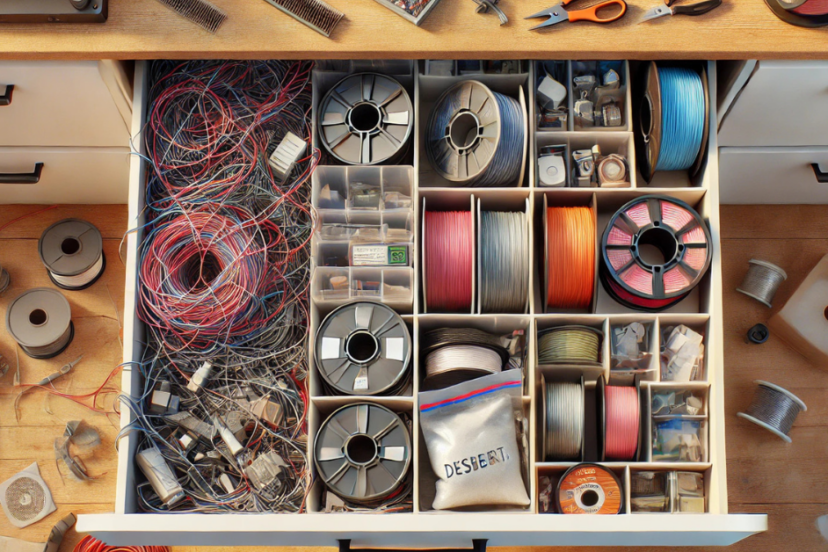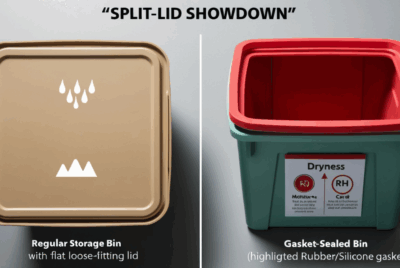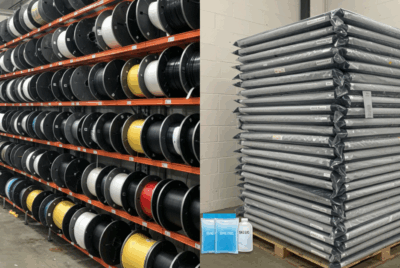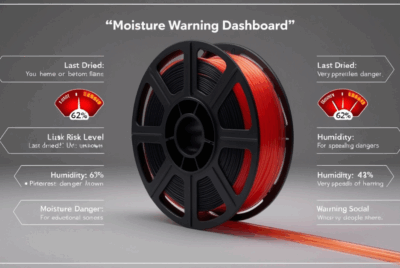Can I store filament in a drawer?
Yes, you can store filament in a drawer, but there are some important considerations to ensure that the filament stays in good condition and is ready for printing when you need it. While drawers can provide a convenient and accessible storage solution, they may not offer the ideal conditions for filament longevity, especially for moisture-sensitive types.
Here are some tips to effectively store filament in a drawer:
1. Ensure Proper Sealing
- Why It Helps: Filament, especially moisture-sensitive materials like Nylon, TPU, and ABS, can absorb moisture from the air. If the drawer is not sealed properly, the filament may absorb moisture, leading to print issues like bubbling, poor adhesion, or stringing.
- How to Fix: Store your filament in airtight containers or vacuum-sealed bags inside the drawer. You can also add desiccant packs (silica gel) inside the drawer to help absorb any moisture in the air.
2. Maintain a Cool, Dry Environment
- Why It Helps: High humidity and temperature fluctuations can negatively affect filament quality. A drawer located in a cool, dry area will help preserve filament better than one in a warm or humid environment.
- How to Fix: Ensure that the drawer is stored in a climate-controlled room away from direct sunlight, heat sources, or moisture-prone areas like bathrooms or kitchens.
3. Use Desiccants
- Why It Helps: Desiccants like silica gel can help absorb moisture and prevent filament degradation. This is especially important for moisture-sensitive filaments such as Nylon, TPU, and PETG.
- How to Fix: Place silica gel packs or other moisture-absorbing materials inside the drawer, along with your filament spools. Be sure to check the desiccants regularly and replace or reactivate them as needed.
4. Keep Filament Spools Organized
- Why It Helps: Keeping filament spools organized in the drawer makes it easier to find the filament you need and reduces the risk of tangling or damage.
- How to Fix: Use spool racks, dividers, or bins to keep filament spools organized and prevent them from shifting around or tangling inside the drawer.
5. Avoid Direct Sunlight
- Why It Helps: Exposure to sunlight can cause certain filaments, like PLA, to degrade, resulting in color changes or reduced print quality.
- How to Fix: Store the drawer in a dark area or ensure the drawer itself is opaque or has a cover to block UV rays.
6. Monitor for Moisture or Damage
- Why It Helps: Even with proper sealing and desiccants, it’s a good idea to periodically check your filament for signs of moisture or damage, especially if you’re storing it for long periods.
- How to Fix: If you notice any issues with print quality (e.g., bubbling or inconsistent extrusion), try drying the filament in a filament dryer or oven before use.
Summary of Storing Filament in a Drawer:
- Seal Filament: Use airtight containers, vacuum-sealed bags, or desiccants to protect filament from moisture.
- Control Environment: Ensure the drawer is kept in a cool, dry area, away from heat and humidity.
- Organize Spools: Use dividers or racks to keep filament spools neatly stored.
- Avoid Sunlight: Keep filament away from direct sunlight to prevent degradation.
- Monitor Quality: Regularly check filament for moisture or damage.
In conclusion, storing filament in a drawer is perfectly fine as long as you take precautions to control humidity and keep the environment cool and dry. Adding airtight bags, desiccants, or using dedicated storage containers will help protect the filament and extend its lifespan.




